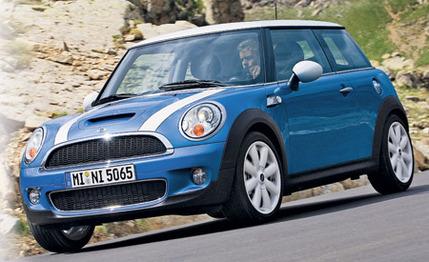 First Drive Review
First Drive Review
There is a new Mini coming that just doesn't look too new. That is intentional. America has taken the Mini to heart, but not because it is small, fast, and agile. The way it looks has made BMW's baby one of the iconic cars of recent times. And retro style is hard to update.
So, although the '07 model doesn't look very different, hardly anything is carried over from the 2001 Mini introduced in Europe. The engines, the transmissions, the body structure, and even the dimensions are all-new.
But if the changes don't show, why make a new model of something that has been such a success? More than 200,000 Minis were made last year, double the expectation. BMW admitted the Mini could be built easier and cheaper and that it needed new powertrains to increase fuel economy and lower harmful emissions.
The new engines, replacing those designed by Chrysler and made in Brazil, are BMW's own in a joint venture with Peugeot: 1.6 liters, four cylinders, DOHC, 16 valves, alloy block and head. The naturally aspirated version has Valvetronic variable valve timing and lift, and a second engine uses a conventional valve gear but has direct gasoline injection and a turbocharger with a "twin scroll" turbine housing to accept the exhaust energy in two-cylinder pairs. The transmission choices are a six-speed Getrag manual and a six-speed Aisin-Warner automatic.
The naturally aspirated engine powers the Mini Cooper and develops 120 horsepower. The turbo, with 175 horsepower, resides only in the Mini Cooper S. That's five horses more than the current cars have, and fuel consumption is better by as much as 12.5 percent.
We drove preproduction versions of the Cooper S on the Zandvoort race circuit in Holland and were satisfied that the vaunted "kartlike" handling has been retained, even though the car is 2.8 inches longer.
The twin-scroll turbo helps the engine deliver its maximum torque from just 1600 rpm, although it seems to lack the urgency from a standstill that is a feature of the current supercharged S engine. But the turbo engine is sweeter and smoother and pleasing in its responses on the track. The latest stability control and associated electronic safety systems allow a driver to corner hard without getting into trouble.
The Mini is still a lot of fun to drive. Whether the ride has improved and whether you should specify the sport suspension or the softer "comfort" setup are issues we'll discuss in a road test after the new car goes on sale here in January. But a first taste suggests an all-around change for the better.